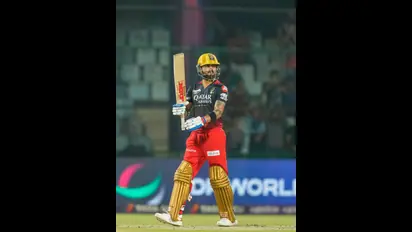IPL 2023: Ravi Shastri gives Virat Kohli lesson on change in tempo - Details here
Published : May 08, 2023, 04:38 PM IST
IPL 2023: While Virat Kohli has been getting the right starts for Royal Challengers Bangalore, he struggles to get his momentum going after hitting his half-century. In the same light, here's a piece of advice from Ravi Shastri.
Stay on top of all the latest Sports News, including Cricket News, Football News, WWE News, and updates from Other Sports around the world. Get live scores, match highlights, player stats, and expert analysis of every major tournament. Download the Asianet News Official App to never miss a sporting moment and stay connected to the action anytime, anywhere.
Read more Photos on
